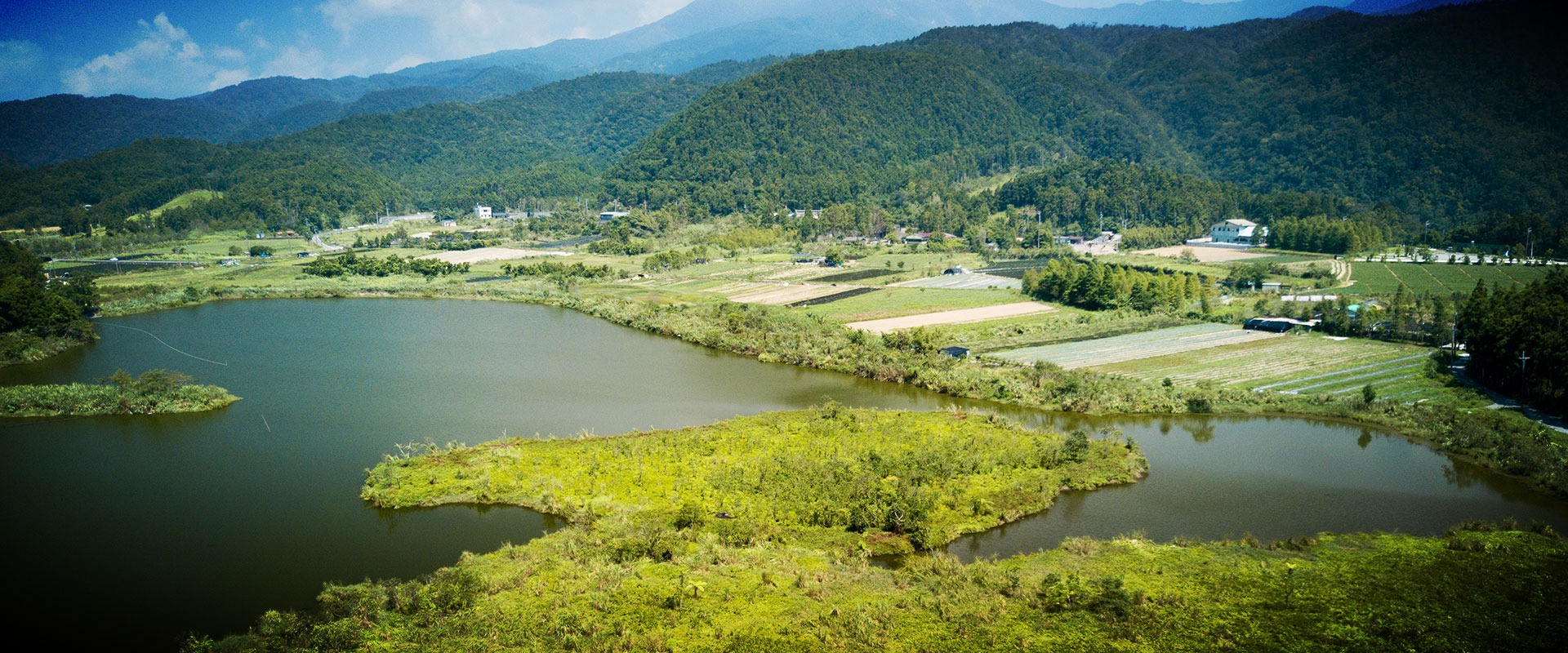
Shuanglianpi, located in Yuanshan Township in Yilan, is a paradise of aquatic plants given to Taiwan by Mother Nature. Shuanglianpi once held one third of the aquatic plant species in Taiwan and is a precious land that nurtures many valuable species. The rich biodiversity of the area won the area the title of National Treasure Level Wetlands.
Shuanglianpi, as the name suggests, should be two lakes connected together. Indeed, Shuanglianpi is composed of an upper lake and a lower lake. With every rainfall the water floods the road and connects the upper and lower lakes. Therefore, the area is called Shuanglianpi. During the Japanese occupation, Hakka people from Taoyuan and Hsinchu moved to the area to farm. In order to increase the area of farming lands they excavated a waterway to direct the lake water to Tsuken River, so the lower lake began to dry up and today visitors can only see the farmlands. The lake we see today is the original upper lake, which covers an area of 17 hectares.
Originally, Shuanglianpi was a wetland with rich biodiversity. According to scholars, 112 species of aquatic plants were recorded in Shuanglianpi, accounting for more than one third of aquatic plants in Taiwan. Additionally, 59 types of Taiwanese dragonflies were documented, which accounted for two fifths of native dragonflies in Taiwan. Also, 29 types of frogs were documented, accounting for two thirds of native frog species in Taiwan. Because Shuanglianpi is situated on the latitude on the southern edge for northern grass species and the northern edge for southern grass species, migrating birds bring aquatic plant sources from both sides every year. Therefore, the area is home to many aquatic plants, amphibians, insects, and reptiles. In addition to migrating birds nesting here in the winter, animals living in the surrounding forests also come to the area to forage and drink. Because of this, the area used to be a hunting ground for the Atayal tribe. They used to hunt Reeves's muntjac, sambar deer, and otters in Shuanglianpi.
Trapa incisa used to be a widely seen aquatic plant in Shuanglianpi. The plant’s stems act like airbags, keeping the plant afloat. Trapa incisa is an annual plant. The seeds are very small, less than 1.5 cm in length. After withering in autumn, the seeds are left in the water for the winter. The seeds sprout again in January of the following year and pink flowers blossom at the end of spring, turning the lake into a sea of pink.
Shuanglianpi also has a unique sight: the floating island (or floating mat). The floating island is a unique feature of old inland lakes. Sun Moon Lake once contained a floating island but it was removed by the Japanese due to worries of the island blocking waterways during power generator construction. Therefore, the floating island in Shuanglianpi, Yilan is now the only remaining natural floating island in Taiwan.
The floating island in Shuanglianpi consists of a strong base made of Leersia hexandra with Cyperaceae emergent plants and ferns, mainly fishbone ferns, on top. The most surprising thing is that even trees can grow on top of the floating island in Shuanglianpi. Trees such as Polyspora axillaris have adapted to the floating island and are able to grow with soil.
Because it is floating on the water, the floating island will move during heavy winds or typhoons. For example, in 2016, typhoon Megi moved the smaller floating island in Shuanglianpi and connected it to the main floating island. According to the records kept by the ex-president of the Society of Wilderness Yilan Branch, Chu Jin-He, at its peak the floating island covered an area of 10 hectares, but now, the island is less than 2 hectares. The main reason for the shrinking floating island and the disappearance of aquatic plants is private land development.
In the past, Shuanglianpi was a privately owned property. In order to develop the land, starting in the 1990s, the owner transformed the land multiple times with excavators. The owner even drained the lake, removed the aquatic plants, introduced grass carp and silver carp, and built embankments, accelerating the deterioration of Shuanglianpi’s ecology. Later in 2002, the Yilan County Council approved a budget of NT$57 million to reclaim Shuanglianpi, finally bringing the nearly 10 years of development damage to an end. During this process, Yilan Community University relocated and preserved the damaged plants from the changed lands to save the ecosystem, and conducted ecological surveys on Shuanglianpi. After which, the Society of Wilderness created the Shuanglianpi Eco Classroom, using it as a base for environmental education and promoting the conservation of habitats and ecology in Shuanglianpi.
The episode follows students on a field trip to Shuanglianpi and invited Director Huang Zhen-Fu of the Society of Wilderness Shuanglianpi Eco Classroom to talk about the ecology and unique floating island of Shuanglianpi. He also talked about the current situation and challenges of ecological conservation in Shuanglianpi.
Podcast on demand



 中
中